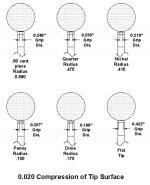I was the pool hall Monday night...
One of the better players had a completely flat tip on his break cue...
I didnt have time to inquire...
So ,
what do you all think"
One of the better players had a completely flat tip on his break cue...
I didnt have time to inquire...
So ,
what do you all think"
